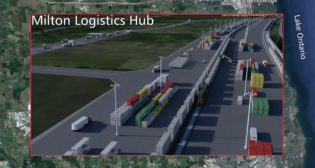
Timing is everything
Written by David Schanoes, Contributing EditorIsn’t it, though? Six weeks ago, the Federal Railroad Administration announced it is withdrawing its ANPRM (Advance Notice of Proposed Rulemaking) regarding testing and treatment of obstructive sleep apnea for safety-sensitive personnel, and then the National Transportation Safety Board opens its dockets on the two bumping post collisions at Hoboken Terminal on NJ Transit and Atlantic Avenue on the Long Island Rail Road.
Guess what? NTSB has determined that both locomotive engineers suffered from obstructive sleep apnea.
Not to put anything less than the finest point on it, NTSB has scheduled its open-to-the-public board meeting to review and approve the reports on both accidents for Feb. 6, 2018.
You don’t have to be a mind-reader to know what that board meeting is going to determine as the cause of the accidents, and what agency it is going to identify as being less than “pro-active” in confronting the issue of obstructive sleep apnea among safety-sensitive transportation employees. However, in the short time between now and Feb. 6, a mere 22 weeks or so, maybe NTSB can answer some questions about its investigations:
• I understand the urgency of interviewing the locomotive engineers as soon as possible after the incidents. However, what’s the point of interviewing the locomotive engineers if you haven’t accessed and analyzed the event recorder data, and reviewed any unusual actions taken by the locomotive engineer as revealed by that data?
• Moving the throttle position to “Run 4” while operating at 8 mph when the train is only 100 feet from the location where train speed is restricted to no more than 10 mph while prepared to stop within half the range of distance?
• Did obstructive sleep apnea cause the locomotive engineers in both these cases to move the throttle into “power” positions, causing their trains to accelerate?
• Did NTSB access event recorder downloads from any number of other trains approaching and operating through these same restricted areas to see if other locomotive engineers were requesting power when the train was already operating at or near the authorized speed?
• Did NTSB access event recorder downloads of train movements made by these same engineers on runs prior to the runs that resulted in these accidents, to determine if these engineers regularly moved the throttle to power positions when operating at or near the maximum authorized velocity in restricted speed zones?
Does it matter? It matters to me because I think FRA should establish a regulation for the testing and treatment of obstructive sleep apnea, but I know FRA cannot and will not be able to establish an effective regulation if claims of obstructive sleep apnea are used to camouflage other failures, to obscure operating rule violations.
Those might be difficult questions to answer, but NTSB is not in a difficult position. FRA is, and it has put itself in a difficult position.
First, FRA provides a Mainline Track Exemption Application (MTEA), essentially exempting passenger railroads from the PTC requirements for passenger terminals where the speed is enforced to be no greater than 20 mph. This is in keeping with FRA’s other determination to accept rear-end collisions of trains as long as the velocity at impact is below 20 mph, as fulfilling the requirement of the 2008 RSIA requirement that PTC systems must prevent train-to-train collisions.)
FRA refuses to address the vulnerability that “restricted speed” presents to the safe separation of trains. Then, after providing the exemption for passenger terminal operations, FRA terminates the rulemaking process that can address the major source of unprotected risk to safe-train operations in passenger terminal operations: obstructive sleep apnea.
Heads up, FRA. NTSB is not going to be sending you an early Valentine’s Day card on Feb. 6, 2018.



